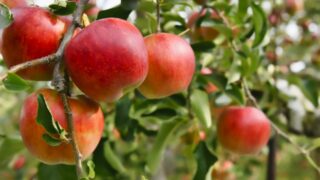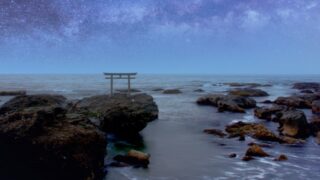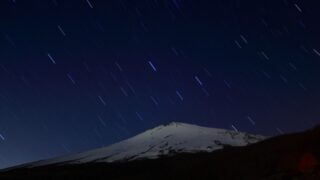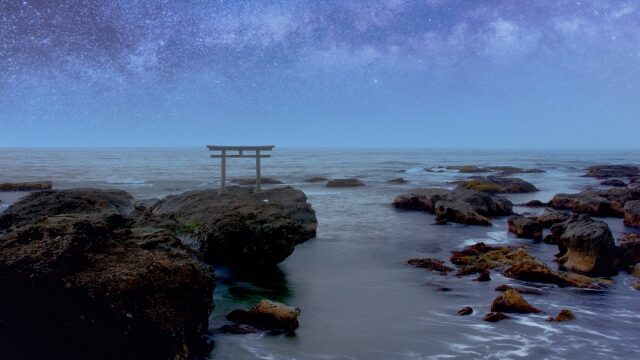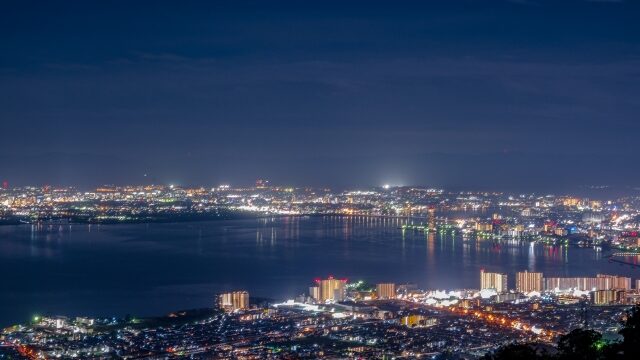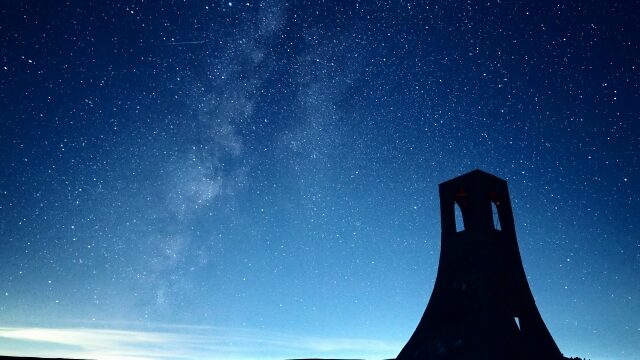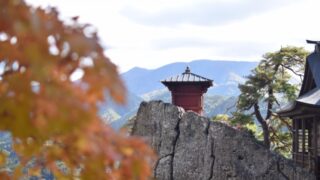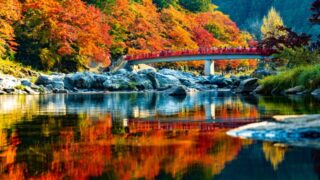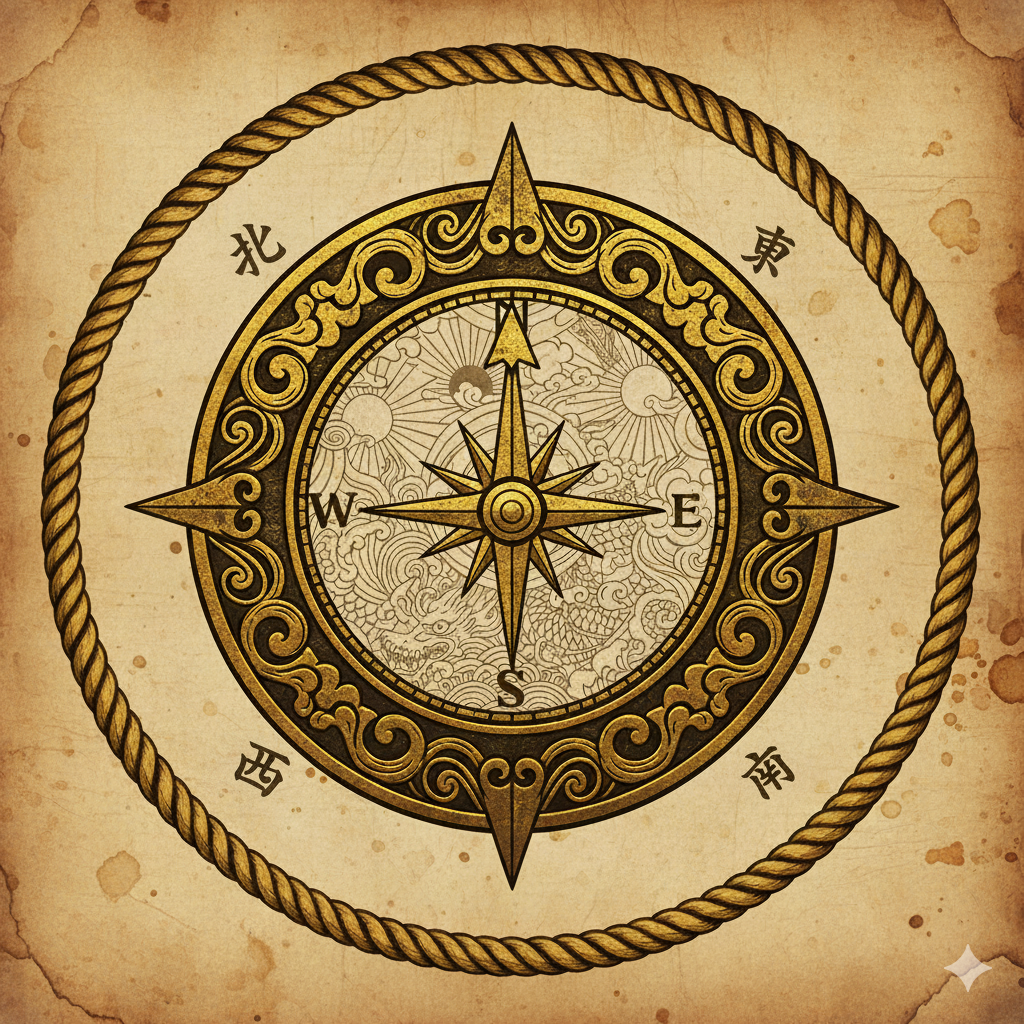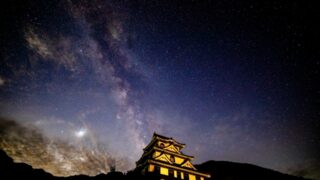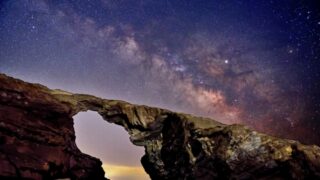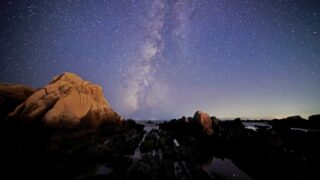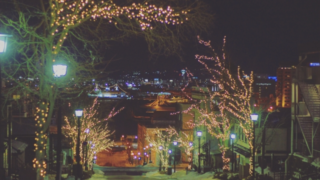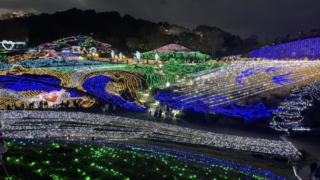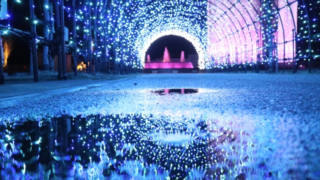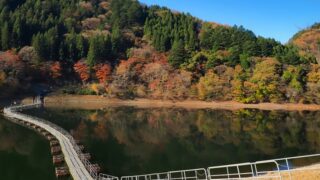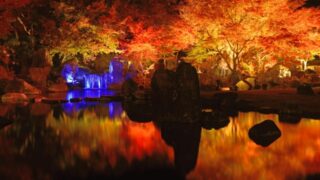As autumn deepens, the mountains are painted in crimson and golden hues across the Kita-Kanto (Northern Kanto) and Koshinetsu regions. This area, spanning from late September in the high alpine zones to early December in the lowlands, offers approximately three months of foliage viewing opportunities thanks to its varying elevations—making it an ideal destination for camper van travel. This luxurious journey combines encounters with autumn colors, hot springs, starry skies, and stunning sunsets.
The greatest appeal of camper van travel is freedom from time and location constraints. You can arrive at destinations before dawn to have mountains bathed in sunrise light all to yourself. Since peak foliage timing is weather-dependent, the flexibility to adjust your itinerary based on real-time conditions is a major advantage. Avoid daytime crowds by shooting in early morning or evening, then soak in hot springs under starlit skies—this style of unrestricted travel creates special autumn memories.
Northern Kanto & Kōshin’etsu Foliage Front – 2025 Outlook
Colors begin in Nagano’s high mountains, then descend to mid-elevations and lowlands. The season typically opens in late September (e.g., Kamikōchi, Norikura) and lasts into early December. This chart shows smooth curves of relative foliage intensity for each area to help plan your trip.
Tochigi Prefecture: Celestial Foliage and Stargazing Paradise
Akechi-daira Observatory — Panoramic Views of Nikko National Park
Located at approximately 1,373m elevation, Akechi-daira Observatory offers one of Nikko’s finest views. A short ropeway ride reveals a grand panorama of Mt. Nantai, Lake Chuzenji, and the spectacular Kegon Falls. From mid-October to early November, maples, mountain ash, and azaleas burst into color, creating an artistic contrast with the waterfall and lake.
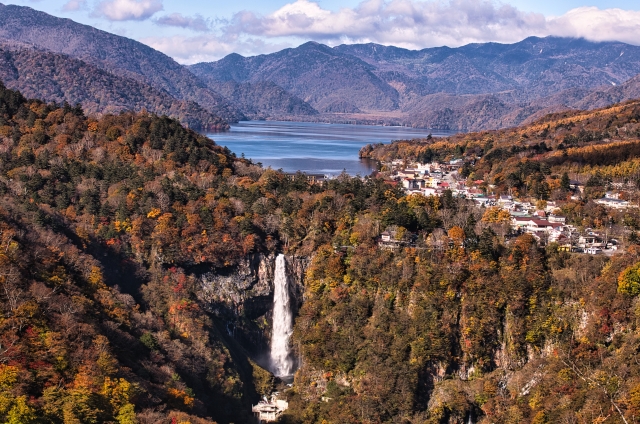
With a camper van, you can avoid traffic jams on Iroha-zaka by arriving early morning. On clear days, visit in the morning when sunlight illuminates the falls and lake for optimal front-lighting; afternoon brings backlight. During peak foliage, the normally 20-minute drive can stretch to 2-3 hours, making pre-dawn departure ideal.
Senjogahara — Mystical Beauty of Wetlands and Starry Skies
At Senjogahara in the Nikko area, alpine marsh grasses and larch trees create a unique landscape. From early to mid-October, the vast wetland turns golden, combining with surrounding mountain colors to create a brocade-like scene.
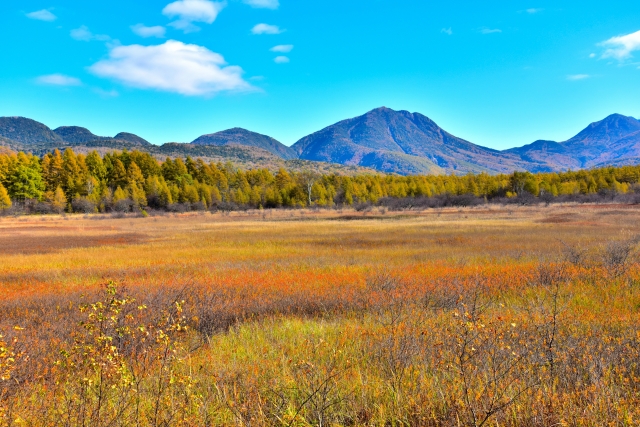
Senjogahara’s appeal extends beyond foliage. Its high elevation and minimal light pollution make it perfect for stargazing. The wetland glows crimson during magic hour after sunset, gradually transitioning into a star-filled sky—nature’s own light show. With a camper van, you can bring tripods and photography equipment for extended astrophotography sessions.
Happo-ga-hara — Dual Symphony of Foliage and Stars
In the Shiobara area, Happo-ga-hara offers late October foliage combined with excellent stargazing. The Omamadai parking lot observation deck is a classic astro-photography location where the Milky Way is visible to the naked eye in autumn’s clear air. During magic hour after sunset, the foliage glows crimson before transitioning into a star-filled sky—nature’s own light show. With a camper van, you can bring tripods and photography equipment for extended sessions.
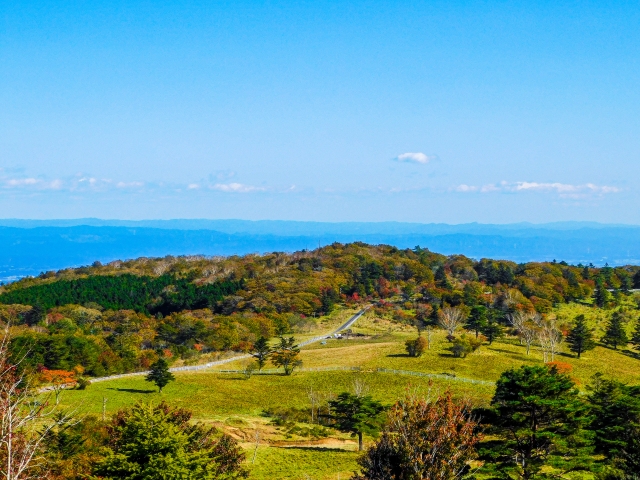
After photography, head to Kinugawa Onsen. At the 300-year-old hidden hot spring Keiunkaku, enjoy private open-air baths with foliage views from 1,000m elevation. The milky sulfur springs soothe fatigue from high-altitude activities.
Mt. Nasu — Kanto’s Earliest Foliage Theater
Mt. Nasu welcomes Kanto’s earliest autumn colors, with mountain ash and maples turning vibrant from late September to mid-October. Take the ropeway to the summit station, where ridgelines leading to Mt. Chausu and Mt. Asahi spread like a crimson carpet. Though mornings and evenings can be chilly at high elevations, camper vans with FF heaters keep you warm and comfortable.
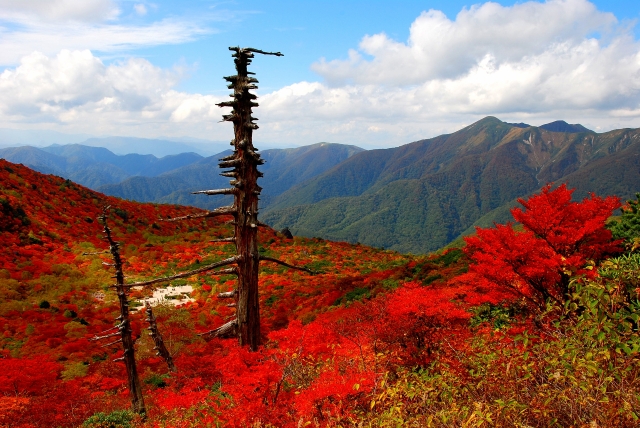
Tochigi Stopover Spots: Hot Springs and Local Delicacies
[Hot Spring] Kinugawa Onsen Keiunkaku
A 300-year-old establishment at 1,000m elevation. Features 100% natural milky sulfur spring water in private open-air baths with foliage views. Best viewing: late October to early November.
[Hot Spring] Oku-Nikko Yumoto Onsen
Milky white sulfur springs discovered 1,200 years ago by Priest Shodo. Day-use bathing available at “Nikko Yumoto Onsen-ji” temple.
[Sweets] Fried Yuba Manju & Nikko Sake Manju
Nikko’s specialty “Fried Yuba Manju” features soy milk and yuba (tofu skin) in the wrapper, deep-fried and sprinkled with rock salt. “Gansozakemanju” from Yuzawaya (est. 1804) has a chewy fermented dough.
Ibaraki Prefecture: Drama of Water and Foliage
Fukuroda Falls — Four-Tiered Masterpiece in Brocade
One of Japan’s three great waterfalls, Fukuroda Falls reaches peak viewing from early to late November. Japanese maples and Amur maples surrounding the 120m-high, 73m-wide cascade create an artistic contrast with the powerful white torrents. From the second observation deck, capture the entire falls and autumn valley in one frame.
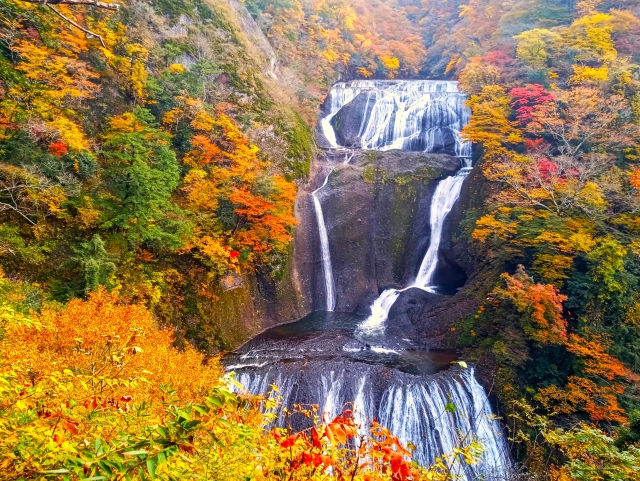
Evening’s soft light gives the falls and foliage a deeper, richer color palette than daytime. With a camper van, avoid daytime crowds by visiting early morning or evening for more serene photography conditions. Don’t miss the “Daigo Light” illumination every evening from early November to early December.
Ryujin Suspension Bridge — Sea of Foliage from Above
At 100m high and 375m long, the Ryujin Suspension Bridge lets you stroll through air while enjoying the deep V-shaped valley’s foliage. This bridge is also famous for stargazing—the valley topography blocks light pollution, offering rare opportunities to photograph illuminated foliage with starry skies.
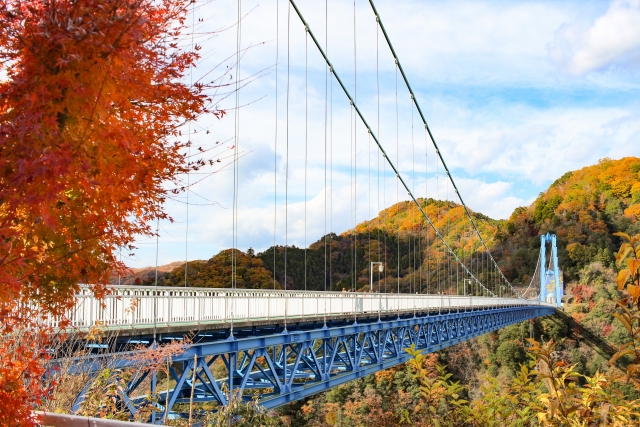
Ibaraki Stopover Spots: Hot Springs and Local Delicacies
[Hot Spring] Fukuroda Onsen & Okukunji Onsen
About 15 minutes by car from Fukuroda Falls, Daigo Onsen Village offers day-use bathing in alkaline simple springs. Open-air baths surrounded by pristine forest air are exceptional.
[Gourmet & Sweets] Handmade Apple Pie from Okukunji Apples
Fragrant pies made with apples grown in the region’s temperature variations. The specialty “raw soft konnyaku” has a jiggly texture perfect with soy sauce or miso.
Gunma Prefecture: Treasure Trove of Majestic Mountain Foliage
Mt. Tanigawa — Celestial Panorama and Autumn Scroll
Straddling the Gunma-Niigata border, Mt. Tanigawa offers staged foliage viewing from late September to mid-October thanks to elevation differences. Take the ropeway to Tenjin-daira for panoramic views of beech and mountain ash foliage. By staying overnight near Doai Station in your camper van, catch the first ropeway to enjoy the observation deck in crisp morning air with no crowds.
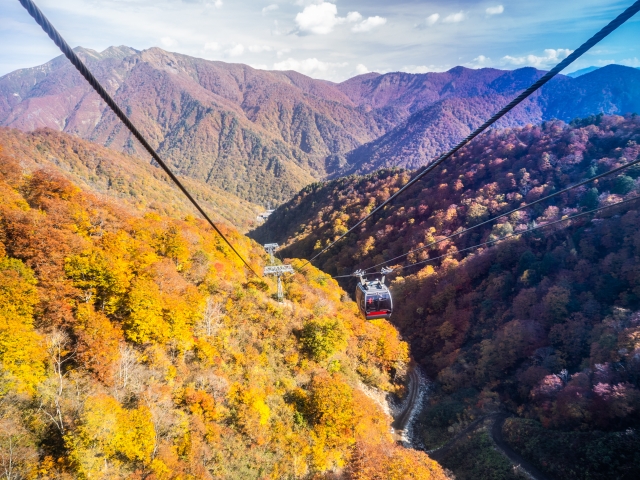
Mt. Haruna — Autumn Colors Around a Caldera Lake
Mt. Haruna, centered on 1,449m Mt. Haruna-Fuji, features mountains surrounding the caldera Lake Haruna turning crimson from mid-October to early November. The reflection of Mt. Haruna-Fuji and foliage on the lake surface is spectacular. Driving around the lakeshore while watching light and foliage transform is a camper van travel highlight.
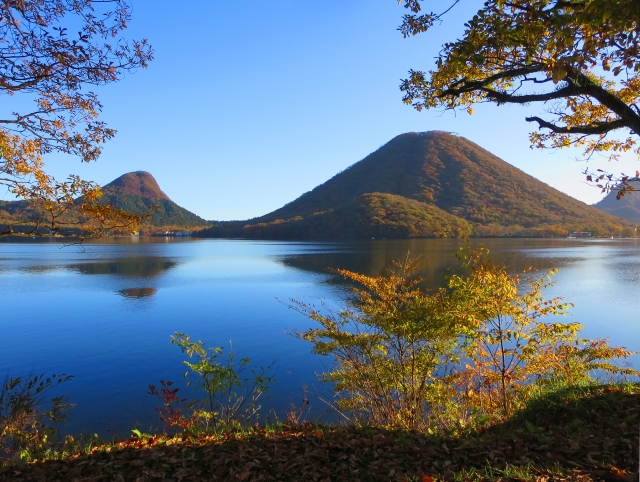
Mt. Akagi — Caldera Theater of Stars and Foliage
Beech and Mongolian oak foliage surrounding the caldera lakes Onuma and Konuma peaks from mid to late October. Mt. Akagi is also known for stargazing—transition seamlessly from sunset foliage photography around Onuma to astronomical observation near the summit.
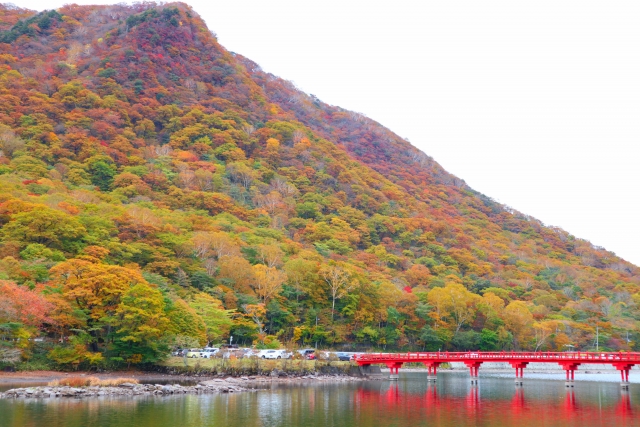
Fukiware Falls — “Oriental Niagara’s” Grand Beauty
Called the “Oriental Niagara,” Fukiware Falls showcases beech, maple, and Japanese maple coloring a 5km gorge from late October to early November. The unique geology where river water plunges into V-shaped rock fissures creates a stunning combination with autumn colors. At Oigami Onsen, about 10 minutes by car, legendary sulfur springs from the Warring States period offer day-use bathing. Some inns have open-air baths overlooking Fukiware Gorge through foliage—perfect for touring hot springs from your camper van base.
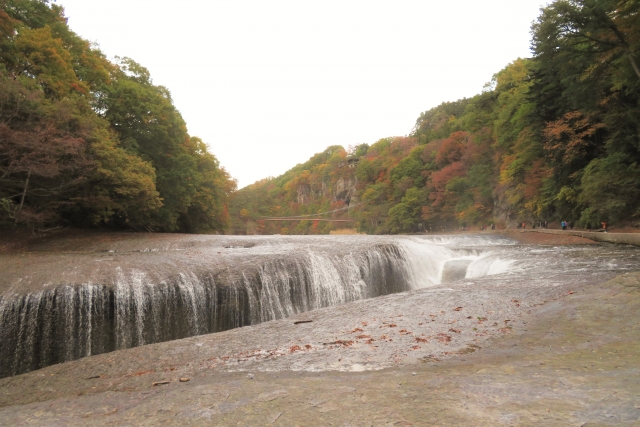
Gunma Stopover Spots: Hot Springs and Local Delicacies
[Hot Spring] Oigami Onsen
About 10 minutes by car from Fukiware Falls. Legend says the giant serpent of Mt. Akagi healed wounds here during the Warring States period. The clear, soft sulfur springs are highly effective for neuralgia and poor circulation, listed among Japan’s Top 100 Hot Springs. Some inns offer open-air baths overlooking Fukiware Gorge through foliage.
[Sweets] Yaki-Manju & Onsen-Manju
Gunma’s staple “Yaki-Manju” features steamed bun dough on skewers, brushed with sweet-savory miso sauce and grilled until fragrant. “Onsen-Manju” from Ikaho Onsen combines brown sugar dough with smooth bean paste perfectly.
Yamanashi Prefecture: Autumn Scroll with Mt. Fuji Views
Shosenkyo Gorge — Japan’s Finest Gorge Beauty and Hot Spring Bliss
From mid-October to late November, enjoy foliage viewing across elevations for about one month at Shosenkyo. Maples and mountain ash color white granite cliffs and clear streams, with the Sengataki waterfall area popular for photographing foliage glittering through water mist. The ropeway’s Panorama-dai offers views of the autumn valley with Mt. Fuji and Southern Alps as backdrop.
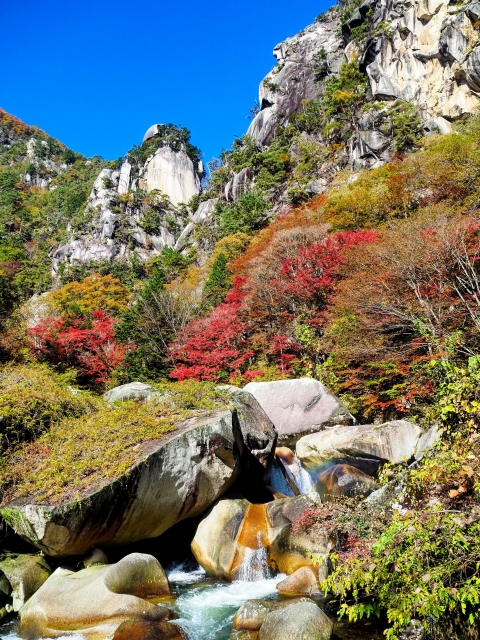
After photography, head to Yumura Onsen in Kofu city. Known as Takeda Shingen’s hidden hot spring, this alkaline simple spring is gentle on skin and soothes fatigue from high-altitude trekking and photography. Park your camper van at hot spring facility lots and sleep there after bathing. Enjoy Kofu Basin night views or starry skies while savoring Yamanashi’s famous Kikyo Shingen Mochi—pure travel luxury.
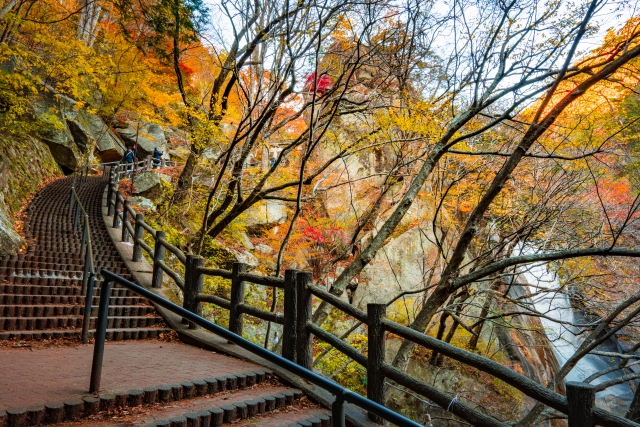
Kiyosato Highlands — Two-Stage Foliage Performance
At Kiyosato Highlands, high elevation allows detailed observation of ecological succession. First, white birch turns golden in early October, followed by Japanese maple’s vivid red in mid-October. Understanding these different species’ timing helps capture specific colors at peak moments.
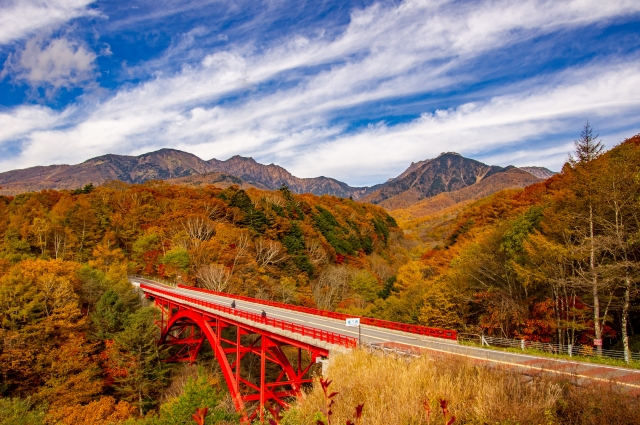
The red Higashizawa Bridge is an excellent photography spot combining the Yatsugatake mountain range backdrop with Kawamata River gorge beauty. With a camper van, tour multiple viewpoints while waiting for optimal light conditions.
Lake Kawaguchi Maple Corridor — Autumn Gold with Mt. Fuji Backdrop
From early to late November, approximately 60 large maples line the corridor with Mt. Fuji as backdrop—spectacular viewing. During the Fujikawaguchiko Autumn Leaves Festival, illumination runs from sunset to 21:30, enabling magical night photography. With a camper van, capture Mt. Fuji and foliage at pre-dawn, front-lit daytime shots, and evening illumination—diverse expressions throughout the day.
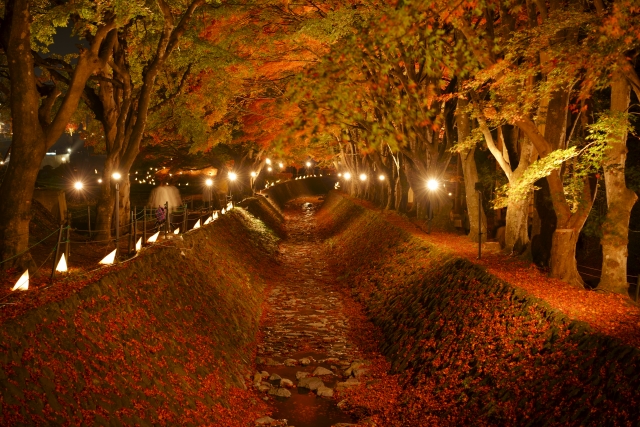
Yamanashi Stopover Spots: Hot Springs and Local Delicacies
[Hot Spring] Yumura Onsen
About 30 minutes by car from Shosenkyo. Known as Takeda Shingen’s hidden hot spring, the alkaline simple spring is gentle on skin and effective for neuralgia and fatigue recovery. Though in the city, quiet inns dot the area, some offering day-use bathing.
[Hot Spring] Lake Kawaguchi Onsen Village
Hot spring area featuring open-air baths overlooking Mt. Fuji. Popular style: sleep lakeside in your camper van while using hot spring facilities.
[Sweets] Kikyo Shingen Mochi & Tsuki no Shizuku
Nationally famous “Kikyo Shingen Mochi” features soft mochi dusted with kinako (roasted soybean flour) and drizzled with kuromitsu (black sugar syrup). “Tsuki no Shizuku” (Koshu grapes wrapped in agar) has been beloved since the Taisho era, with subtle grape acidity and sweetness.
Nagano Prefecture: Alpine Scenery and Highland Foliage
Kamikochi — Northern Alps’ Autumn Symphony
At approximately 1,500m elevation, Kamikochi sees white birch coloring from late September, with larch turning golden valley-wide by mid-October. First snow appears on Hotaka ridgelines, creating a triple harmony of snow-white Hotaka, autumn valley, and emerald Azusa River.
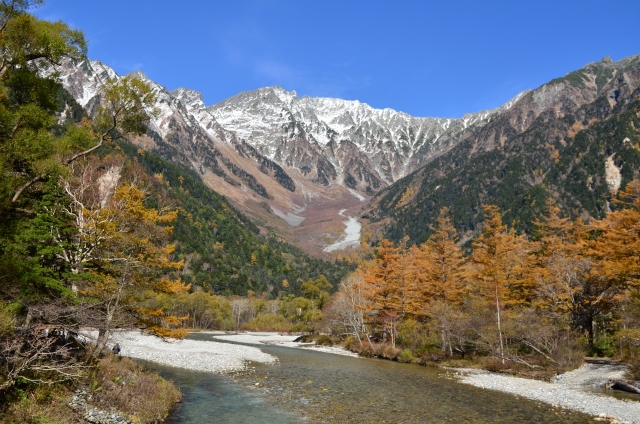
Private vehicles are restricted, so park your camper van at Sawando or Hirayu lots and take the first shuttle bus. Early morning photography at Taisho Pond captures morning mist over the water surface reflecting inverted Mt. Yake, with golden marsh grasses glowing along the shore.
Tsugaike Nature Park — Alpine Foliage with Mt. Shirouma Views
From late September to mid-October, enjoy wetland grass colors and alpine foliage simultaneously at Tsugaike Nature Park with Mt. Shirouma backdrop. White birch and mountain ash display vivid alpine colors. With a camper van, efficiently tour multiple alpine foliage spots like nearby Hakuba Goryu and Happo-one.
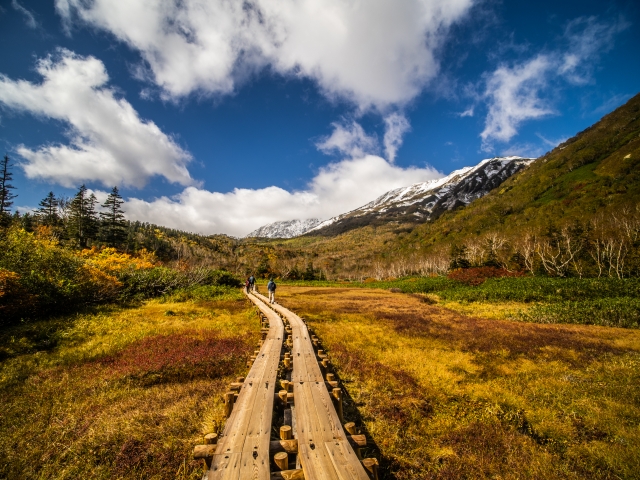
Nagano Stopover Spots: Hot Springs and Local Delicacies
[Hot Spring] Shirahone Onsen
30 minutes by car from Sawando, Kamikochi’s gateway. The milky “Shirahone waters” are said to prevent colds if bathed in for three days—a highly medicinal hidden hot spring. The unique waters rich in calcium and magnesium are smooth and gentle on skin.
[Hot Spring] Hirayu Onsen
Part of Okuhida Onsen Village with abundant springs. Easily enjoy sulfur-scented cloudy waters. Popular plan: stay at Hirayu Campground and take first bus into Kamikochi.
[Sweets] Kuri Yokan, Kuri Kanoko & Oyaki
Obuse’s “Kuri Yokan” and “Kuri Kanoko” feature refined sweetness from select domestic chestnuts. Chikufudo’s chestnut yokan was even presented to the Showa Emperor. Shinshu’s local food “Oyaki” wraps nozawana pickles or pumpkin in miso-flavored filling—simple, rustic taste.
Niigata Prefecture: Gorge Beauty Meets Contemporary Art
Kiyotsu Gorge — Light Tunnel and Brocade Gorge
One of Japan’s three great gorges, Kiyotsu Gorge sees maples and oaks coloring columnar jointed rock walls from late October to early November. At the 750m gorge tunnel’s deepest point, the Panorama Station’s water-covered floor reflects rocks and foliage in a dreamlike scene. This contemporary art collaboration offers unparalleled photography experiences.
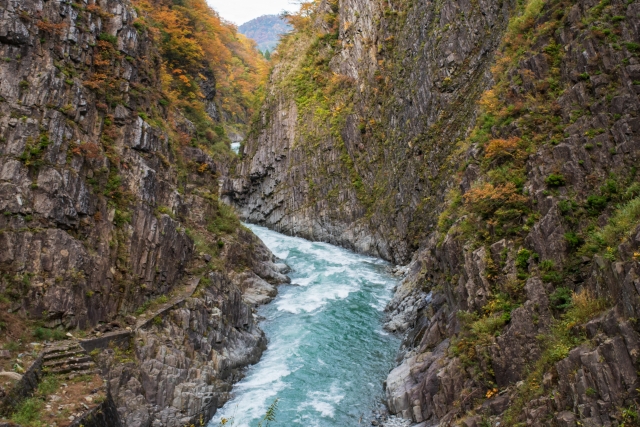
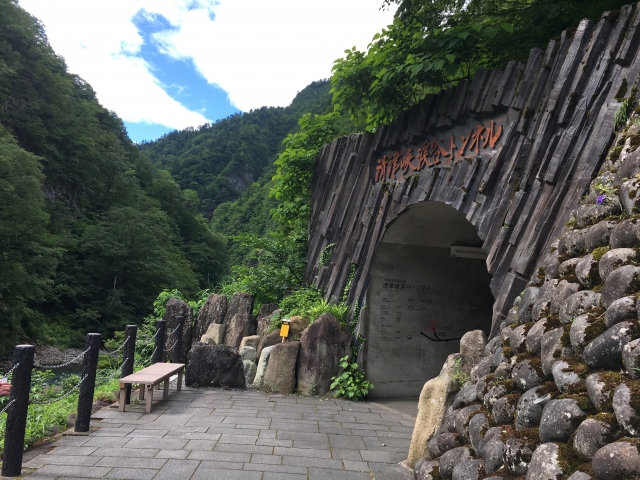
Naeba Dragondola — Aerial Walk Through Foliage Panorama
Japan’s longest gondola at 5,481m, the Dragondola connects Naeba and Tashiro in spectacular ropeway fashion. From early October to early November, enjoy 360-degree foliage immersion during the approximately 25-minute aerial journey. The red, yellow, and orange gradients of beech, oak, and maple are stunning, especially when passing over Futai Lake.
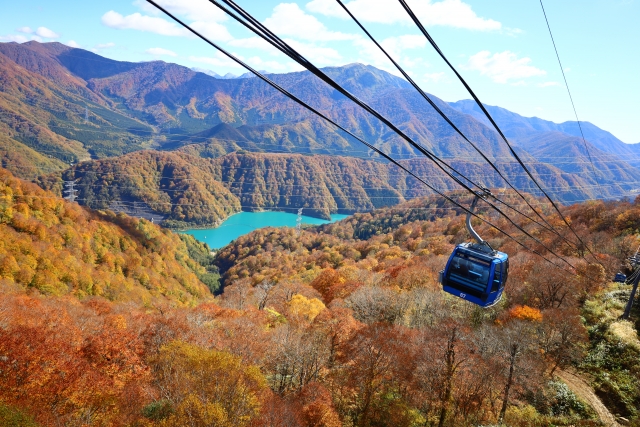
With a camper van, ride during uncrowded early hours to focus on photography. Round-trip tickets let you enjoy changing light at different times.
Niigata Stopover Spots: Hot Springs and Local Delicacies
[Hot Spring] Matsunoyama Onsen
About 40 minutes by car from Kiyotsu Gorge. Counted among “Japan’s Three Great Medicinal Springs,” with rare waters rich in salt and sulfur. Over 700 years of history, with fossil seawater-origin springs that are salty but offer high sterilization and healing effects. Experience the famous waters at the communal bath “Taka no Yu.”
[Sweets] Sasa Dango & Shutsujin Mochi
Niigata’s staple “Sasa Dango” wraps yomogi-infused mochi around bean paste, bundled in bamboo leaves and steamed. Bamboo leaves have antibacterial properties—this was originally preserved food. “Shutsujin Mochi,” associated with Uesugi Kenshin, features mochi with kinako and kuromitsu.
Kita-Kanto Featured Foliage Photography Spots
Tochigi: Mt. Nasu (Mt. Chausu)
One of Japan’s 100 Famous Mountains. At 1,915m, this active volcano sees Ubaga-daira turn fiery red with enkianthus and mountain ash from late September. Easily accessible by ropeway, the summit offers 360-degree panoramic views.
Travel Detours
Hot Springs: Nasu Onsen Village (Omaru Onsen, Kita Onsen, Shika no Yu)
Sweets: Goyotei no Tsuki, Onsen Manju
Activities: Momiji-dani Suspension Bridge, Tsutsuji Suspension Bridge
Ibaraki: Fukuroda Falls
One of Japan’s three great waterfalls. Known as the “Four-season Falls,” this 120m-high, 73m-wide cascade was praised by poet Saigyō. View the powerful falls from the 1st deck, and the foliage-falls harmony from the 2nd deck. Illumination is a must-see.
Travel Detours
Hot Springs: Fukuroda Onsen
Sweets: Okukunji Apples, Dried Sweet Potato
Activities: Ryujin Suspension Bridge, Mt. Tsukiore Hiking, Apple Picking
Gunma: Mt. Tanigawa, Mt. Haruna & Mt. Akagi
1Mt. Tanigawa
Famous 1,977m peak with ropeway access to Tenjin-daira. Panoramic foliage views from the summit are overwhelming, with beech and mountain ash beautifully colored.
2Mt. Haruna
Beautiful combination of Mt. Haruna-Fuji viewed from the lakeside with foliage. Kajika Bridge area near Ikaho Onsen is also popular for autumn colors.
3Mt. Akagi
One of Japan’s 100 Famous Mountains. Caldera lakes Onuma and “Little Oze” Kakumanbuchi offer spectacular foliage reflections. Features Mongolian oak and white birch groves.
Travel Detours
Hot Springs: Kusatsu Onsen, Ikaho Onsen, Minakami Onsen, Akagi Onsen Village (cloudy waters)
Sweets: Onsen Manju, Yaki-Manju
Activities: Lake Haruna Cruise, Lake Onuma Cruise, Kakumanbuchi Boardwalk, Akagi Nature Garden
Koshinetsu Featured Foliage Photography Spots
Yamanashi: Lake Kawaguchi & Shosenkyo
Lake Kawaguchi features foliage with Mt. Fuji backdrop—the lakeside Maple Corridor is popular. About 60 ancient maples turn deep red, with magical illumination. Shosenkyo boasts Japan’s finest gorge beauty with spectacular contrast between unique rock formations and foliage.
Travel Detours
Hot Springs: Lake Kawaguchi Onsen, Isawa Onsen
Sweets: Shingen Mochi, Kikyo Shingen Mochi
Stargazing: Mt. Fuji & Stars, Kiyosato Observatory
Nagano: Kamikochi & Tsugaike
At 1,500m elevation, Kamikochi offers spectacular views of Hotaka Range and foliage from Kappa Bridge. Golden larch and red maple contrast beautifully. Tsugaike Nature Park at 1,900m sees peak grass colors from late September. Private vehicle restrictions apply.
Travel Detours
Hot Springs: Shirahone Onsen, Norikura Kogen Onsen, Hakuba Onsen
Sweets: Oyaki, Kuri Kanoko
Activities: Taisho Pond Trail, Mt. Karasawa Climbing
Niigata: Kiyotsu Gorge & Naeba Dragondola
Kiyotsu Gorge Tunnel is one of Japan’s three great gorges. The V-shaped gorge and foliage viewed from the Panorama Station at tunnel’s end are overwhelming. Naeba Dragondola is Japan’s longest gondola at 5.5km, offering aerial views over a sea of autumn colors.
Travel Detours
Hot Springs: Echigo-Yuzawa Onsen, Muikamachi Onsen
Sweets: Sasa Dango, Echigo Senbei
Stargazing: Kiyotsu Gorge area ideal for stargazing
🍁 North Kanto & Koshinetsu Autumn Leaves Camper Van Trip – FAQ
Conclusion: Embracing Freedom in Autumn’s Brocade Journey
Autumn foliage tours from Kita-Kanto to Koshinetsu offer extended viewing periods thanks to elevation differences, plus diverse experiences including hot springs, starry skies, and stunning sunsets. The flexibility to adjust routes based on weather and foliage progress, leveraging camper van freedom, is a major advantage.
Monopolize sunrise-lit mountains, avoid crowds by shooting during off-peak hours, and soak in hot springs under star-filled skies. Not bound by accommodation reservations, you can wait for perfect conditions—this is the essence of camper van travel. Loading photography equipment, cold-weather gear, and provisions while having your own mobile base provides peace of mind for extended journeys.
However, don’t forget to prepare for wildlife encounters at high elevations and sudden temperature drops. Carrying bear bells, adequate cold-weather clothing, and checking latest local information are keys to safe travel. Use michi-no-eki rest stops and RV parks wisely, respect local rules and etiquette, and fully enjoy this autumn’s special brocade romance. Set out on a memorable autumn foliage journey with your mobile home—the camper van.
